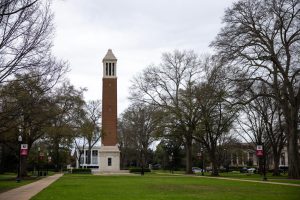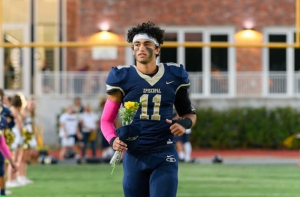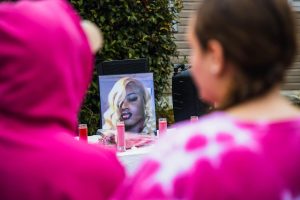Dispatches from Abroad: Vietnam natives reflect on history
October 15, 2019
Deciding to visit Vietnam a few weeks ago brought up a moral dilemma for me.
This semester I have frequently taken weekend trips to neighboring cities or other Southeast Asian countries from where I study in Chiang Mai, Thailand. I usually look at costs, places to stay and what to do before I commit. Those are all things I considered before booking flights to Bangkok, Singapore and Bali, anyway.
But the Vietnam decision felt more complicated, given our war history. In Indonesia, the country I call home never poisoned innocent villages’ harvests and rivers for military advantage. American troops never shot Singaporean-civilian families down, firing squad-style in their own homes. Traveling to those places, I knew I could go as just another tourist.
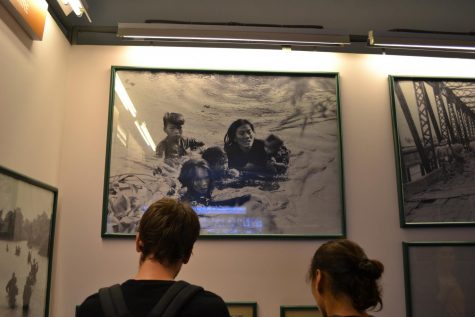 In Vietnam, many who lived through what they call the “American War” are still alive. I wondered to what extent they would welcome a citizen from the United States.
In Vietnam, many who lived through what they call the “American War” are still alive. I wondered to what extent they would welcome a citizen from the United States.
I found an article by VNExpress International and Reuters, though, that said in 2017, 84% of Vietnamese respondents had “a very or somewhat favorable view of the U.S.” This helped reassure both me and my travel partner for this trip, Emil Haarmans, a senior from California State University, Chico.
Later, I met a Vietnamese college student there named Nguyễn An. He said these figures seemed about right and that his people would embrace us.
And welcome us they did. They treated us with respect and outgoing hospitality the whole weekend. Some even went out of their way to say they especially enjoyed having American visitors.
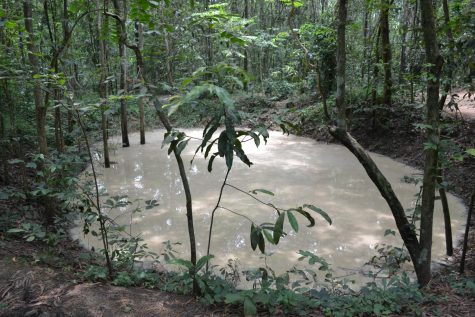 We flew into Ho Chi Minh City (Saigon) that Thursday, and the next morning we drove to a nearby village called Cu Chi. There, we went through an old jungle combat zone featuring trenches, bomb craters, booby traps and entrances to 17 kilometers of Viet Cong tunnels.
We flew into Ho Chi Minh City (Saigon) that Thursday, and the next morning we drove to a nearby village called Cu Chi. There, we went through an old jungle combat zone featuring trenches, bomb craters, booby traps and entrances to 17 kilometers of Viet Cong tunnels.
In the whole country between 1948 and 1966, all of the tunnels together stretched 250 kilometers and squeezed too tight for most American and French soldiers to fit. This war included almost twice as many bombs dropped as in World War II and the Korean War combined, so infantry had to adapt underground.
“The Vietnam War was a war of destruction,” our tour guide said, echoing a common epithet used there.
With a shooting range and substantial gift shop, the site juxtaposed a history of traumatic guerilla warfare with present-day entertainment. Later that afternoon, though, the Ho Chi Minh War Remnants Museum more bluntly characterized the magnitude of all the bloodshed.
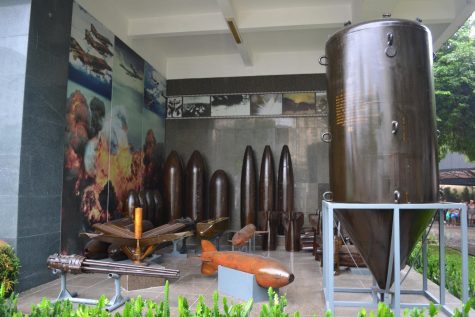 The museum entrance featured a gallery of restored aircrafts, artillery shells, tanks, boats and other war machinery. They included informational cards in Vietnamese and English showing specifications about their impressive capabilities. Seeing these helped illustrate how the war managed to kill 3 million Vietnamese (2 million civilians among them), injure 2 million more and see 300,000 more go missing.
The museum entrance featured a gallery of restored aircrafts, artillery shells, tanks, boats and other war machinery. They included informational cards in Vietnamese and English showing specifications about their impressive capabilities. Seeing these helped illustrate how the war managed to kill 3 million Vietnamese (2 million civilians among them), injure 2 million more and see 300,000 more go missing.
The Agent Orange exhibit told the story of a chemical deforestation and water pollution campaign that impacted 3 million of the 4.5 million Vietnamese exposed to it.
“From 1961-1971,” a panel read, “the U.S. Army sprayed about 80,000,000 litres of chemical substances and Agent Orange including 366 kilograms of dioxin on 26,000 points of 25% of Vietnam’s territory.”
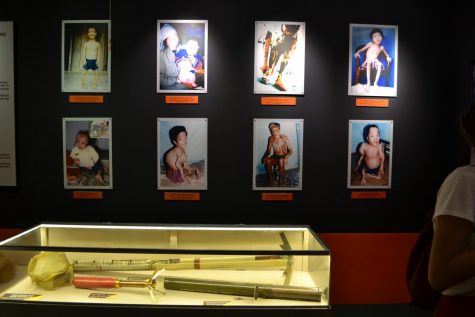 Galleries here showed victims with eroded skin, lifeless limbs, elephantiasis-like cysts and a pair of twin babies born conjoined just above the pelvis. One part explained that some who believed themselves exposed to the chemicals, even without symptoms themselves, chose not to have children. The museum said from this poison, Vietnam currently has 150,000 second-generation victims, 35,000 of the third generation and 2,000 of the fourth.
Galleries here showed victims with eroded skin, lifeless limbs, elephantiasis-like cysts and a pair of twin babies born conjoined just above the pelvis. One part explained that some who believed themselves exposed to the chemicals, even without symptoms themselves, chose not to have children. The museum said from this poison, Vietnam currently has 150,000 second-generation victims, 35,000 of the third generation and 2,000 of the fourth.
The war crimes exhibit displayed graphic photographs above placards with equally distressing stories. These included civilians being interrogated and tortured, mothers shot in front of their children in local villages, corpses mutilated post-mortem and chemical warfare.
Other rooms commemorated notable individuals like exposé photojournalist Larry Burrows and American soldiers who resisted the cause. We also saw tribute artwork and an exhibit on “re-education” (sometimes called “concentration”) camps complete with a 12-foot-tall guillotine.
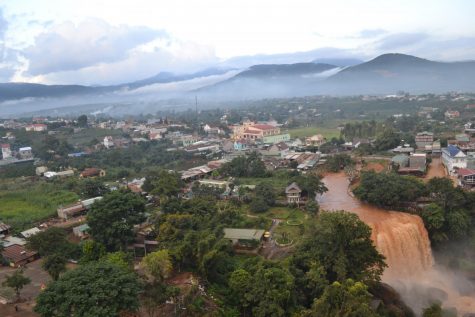 At Da Lat University, our next stop, was where we met An, who invited us to his badminton tournament. He worked at a hostel in Da Lat that offers food tours of the city. The next night, he and his hostel’s owner, 28-year-old Binh Nguyen, took us on one of those tours.
At Da Lat University, our next stop, was where we met An, who invited us to his badminton tournament. He worked at a hostel in Da Lat that offers food tours of the city. The next night, he and his hostel’s owner, 28-year-old Binh Nguyen, took us on one of those tours.
I wanted to talk to some locals about current relations between our two countries, so I asked for their perspectives.
They said while the Vietnamese have not forgotten about the dark days, they have made a conscious effort to move on. An said that in Vietnam they seek peace over resentment and revenge for the sake of future generations’ well-being.
Nguyen, whose grandfather fought in the war, said he would rather see people as individuals rather than as products of a country.
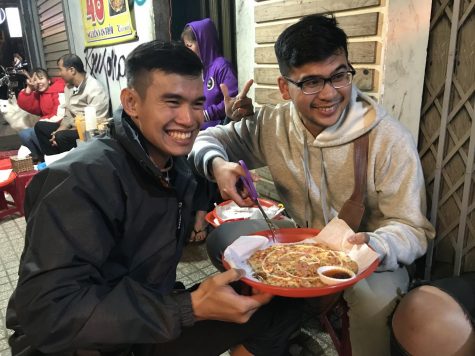 A few people I met in Vietnam credited the Clinton presidential administration for economic reparations as helpful solace after the fighting ended. Nguyen also said the French colonization had left behind some culture they enjoyed. This included banh mi sandwiches, or baguette-style bread with meat, eggs, vegetables and sauces inside. Personally, I ate about seven of those during the weekend.
A few people I met in Vietnam credited the Clinton presidential administration for economic reparations as helpful solace after the fighting ended. Nguyen also said the French colonization had left behind some culture they enjoyed. This included banh mi sandwiches, or baguette-style bread with meat, eggs, vegetables and sauces inside. Personally, I ate about seven of those during the weekend.
An closed our talk with a line that eased my conscience a little and gave me hope. In its simplicity, it reflected the virtuous nature of so many of the Vietnamese I met.
“Tell them we are happy.”





